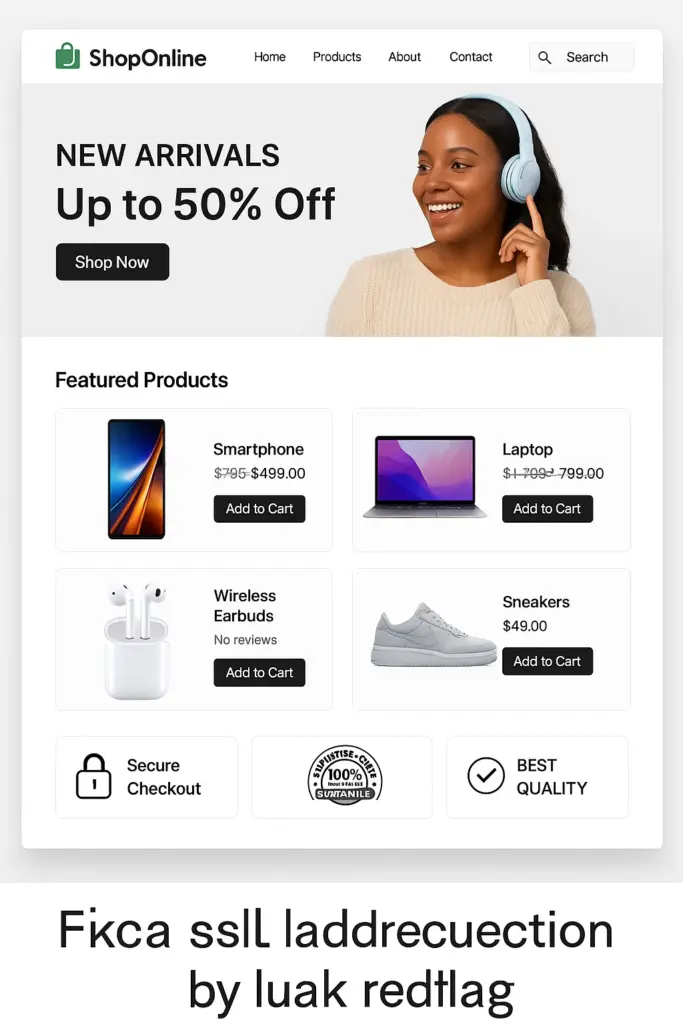15 Types of Scam Websites in 2025 (and How to Spot Them)
This is our list of 15 types of scam websites in 2025. Scam websites are being created more than ever. They’re main purpose is to deceive, mislead, and steal—your identity, your money, or your peace of mind. Whether it’s a fake online store or a phishing site disguised as your bank, scam websites come in many forms. Here’s a list of the most common (and clever) types of scam websites to help you stay safe online.
Thank you for reading this article, if you find it interesting don't forget to share!
1. Phishing Websites
Phishing sites are some of the most dangerous and prevalent online scams. These websites impersonate trusted brands—like your bank, email provider, or social media platforms—to trick you into entering sensitive information such as usernames, passwords, or credit card numbers.
- Example: A site that mimics PayPal asking you to “verify your account.”
- Tell-tale signs: Slight misspellings in the URL, poor grammar, urgent messaging (“Your account will be closed if you don’t act now!”).
2. Fake E-commerce Stores

These scam websites pose as legitimate online shops, often offering luxury goods, electronics, or trendy items at unbelievably low prices. After taking your payment, they either send you a low-quality counterfeit, a completely different item, or nothing at all.
- Red flags: No customer reviews, suspiciously low prices, lack of HTTPS security, or recently registered domains.
3. Investment Scam Websites
These sites promise quick, high returns on investments through forex, cryptocurrency, NFTs, or “AI-driven” trading bots. They often have flashy dashboards, fake testimonials, and manipulated figures to build trust.
- Common tactics: Ponzi schemes, fake trading data, and aggressive referral incentives.
4. Tech Support Scam Pages
Often triggered by pop-up ads or redirected links, these pages simulate virus warnings and claim your device is compromised. They urge you to call a toll-free number where a “tech support agent” (scammer) will attempt to gain remote access or charge exorbitant fees.
- Buzzwords: “Your PC is infected!” “Call Microsoft Support immediately!”
5. Online Loan or Grant Scams
These sites promise guaranteed approval for loans, grants, or financial aid—even to users with bad credit. Once you apply, they may ask for upfront “processing fees” or harvest your personal and financial data.
- Warning signs: Requests for payment before disbursement, vague contact details, or unrealistic promises like “instant approval with no credit check.”
6. Romance Scam Platforms
These are often shell dating websites filled with fake profiles. Scammers establish emotional relationships and then invent emergencies to ask for money. Some are part of larger “romance scam rings” operating multiple accounts simultaneously.
- Danger signs: Rapid escalation of affection, reluctance to meet in person, or requests for wire transfers.
7. Fake Charity Websites
Especially active during disasters or crises, these websites tug at your heartstrings with fabricated images, stories, and donation buttons. The goal is to steal donations or credit card data.
- Check for: Verified registration, transparency in how funds are used, and listings on sites like Charity Navigator.
8. Survey and Giveaway Scams
These websites claim you’ve won a prize—like a new iPhone or gift card—but require you to complete a survey or pay shipping fees. The real intent? Collecting your personal info and enrolling you in recurring payment traps.
- Common lines: “You’re today’s lucky visitor!” or “Answer 3 questions to win!”
9. Subscription Trap Sites
Also known as continuity scams, these offer a free trial for products like skin creams, supplements, or weight loss pills. Buried in the fine print is an automatic subscription that charges your card monthly.
- Pro tip: Read the Terms & Conditions—especially anything involving “auto-renew” or “rebilling cycles.”
10. Clone Websites
Scammers copy the exact design and content of real, reputable websites and swap the domain with a lookalike. These clones are used to steal customer credentials or redirect payments.
- Look closely: Inspect URLs, check SSL certificates, and verify with search engines.
11. Rogue Pharmacy Websites
These sites offer prescription medications without requiring a valid prescription. Many sell counterfeit, expired, or dangerous drugs.
- Trusted check: Use tools like LegitScript to verify legitimacy.
12. Work-From-Home Scam Sites
Promising easy income for little effort, these scam sites lure users into fake jobs like “data entry” or “mystery shopping.” After applying, you’re often asked to buy a “starter kit” or pay for training materials that never lead to real employment.
- Watch out for: Upfront fees, generic job descriptions, and unverified testimonials.
13. Fake Ticketing Sites
From concerts to sports events, scammers build slick websites offering “last-minute deals” on tickets. Victims often receive invalid, duplicate, or completely fake digital tickets.
- Verify first: Check against official ticket vendors like Ticketmaster or StubHub.
14. Impersonation of Government or Legal Entities
These sites claim to be official portals for passport renewal, tax payments, visa processing, or even court fines. They may charge inflated fees or collect data for identity theft.
- Verify domain endings: Legitimate government websites usually end in .gov (US), .gov.uk (UK), etc.
15. Crypto Wallet & Exchange Fakes
With cryptocurrency booming, fake wallet services and crypto exchanges have emerged. Some mimic real platforms, while others promise high-yield crypto investments or staking rewards.
- Red flags: Promises of guaranteed returns, shady token launches, or pressure to “act now.”
How to Protect Yourself from Scam Websites
- Check the URL carefully for typos or unusual characters.
- Look for HTTPS and a padlock icon—but remember, scammers can also use HTTPS.
- Google the company name + “scam” or “reviews.”
- Check the domain’s age using tools like Whois (scammers often use newly created domains).
- Never enter personal or payment details unless you’re absolutely sure the site is legitimate.
Final Thoughts
Staying informed is your first line of defense. Bookmark this 15 types of scam websites in 2025 list, share it with friends and family, and keep a skeptical eye out for anything that seems just a little too good to be true and remember if your unsure of a website you can always run it through out website scanner, it takes less than 30 seconds to get the result




